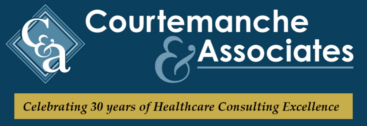Many Healthcare Organizations are challenged with shortfalls in patient care staffing which often requires Leadership to shift manpower resources to more direct support roles and responsibilities. Although this practice can be an effective means to plug people into open slots, leadership must ensure that these resources are set up for success and that patient/staff safety is kept as a paramount goal. There are a number of considerations that should be part of your manpower management plans when addressing potential shortfalls in patient care support. Many of these are founded in the concepts of Emergency Management (EM). Staffing shortfalls should be considered part of the organization’s EM plan as we are witnessing increasing issues with healthcare being able to sustain normal clinical operations with these gaps in manpower resources.
Key Considerations
Understanding the Need:
Managing your healthcare team to ensure you have the right people with the right skills in the right place at the right time means that you must maintain a clear understanding of what resources you have in terms of skill, role, and availability. It’s imperative to know what your organization needs and what assets you have available to meet those needs. This includes not only those requirements during the day but after-hours and on weekends. Some organizations can utilize robust staffing platforms that can assign and track staff in their workforce. Others may be relegated to using less advanced tools. The most important factor is that organizations must be able to identify their workforce gaps both in real time and, ideally, far enough in advance to adjust their resources and/or services.
Optimizing the Workforce:
Healthcare, as with other industries, must ensure that they are maximizing their employees’ skills and experiences in sustaining their services. They should also look for opportunities to expand on these skills and work experiences in roles that, although not primary to the current position, may be able to serve in other roles to sustain operations. Organizations should ensure they catalog the skills and work experiences of their staff and be able to readily identify their staff who may be able to serve in an expanded or varied capacity. Some organizations have established adjunct roles as part of the employee’s primary work responsibilities. These are often tied in with the organization’s Emergency Response Plan to mitigate gaps in the workforce. A review of employee roles should be made to determine if individuals in these positions can be reassigned to support critical gaps in manpower resources. For example, can staff in Medical Records be used to monitor patients who are identified as a suicide risk, providing they are trained? Can some of their work be placed on hold until the staffing issue is resolved? Can you restrict or shut down services to reroute staff to direct care roles? The concept of non-essential employees during emergency management events is transforming to where all employees are essential where they may serve in roles different than where they have been originally assigned.
Communicating Job Role and Responsibilities:
Organizations should communicate manpower optimization plans with staff who may be called upon to provide additional support. This may be part of the hiring process or as part of the annual education and training plan. It’s imperative that employees are aware of any role/responsibilities, scope of practice and preparations (training, orientation, etc.) that will be necessary. These assignments should be in writing and with a copy provided to the employee so there is a record of the communication and expectations of both employee and organization to ensure success. Organizations have conveyed these additional roles as a means for employees to expand on their skills, making them more marketable and, in some circumstances, a means to gain additional pay or opportunity for upward mobility within the organization.
Training and Competency:
Organizations should ensure, that once roles have been identified where staff may serve as a support asset, which required orientation/training/competencies are provided. These are dependent on the role that the staff member will be supporting. These requirements should already be in place for staff members who are serving in these positions. Coordination with Staff Development and/or clinic educators and Department Leaders will be essential to ensure that adjunct staff are adequately prepared to provide safe patient care. This would include development of a listing of required orientation, training, and competencies (as applicable). The organization will need to invest in supporting these adjunct staff in completing their required training and ensure that these skills are kept up to date. Identification of staff who are deficient in these additional training/competency requirements should be a priority to ensure that adequate time is provided to retrain and reassess any deficient skills. This allows the organization to remain ready to respond with prepared assets in the event of staffing gaps. Consideration should be made to include staffing gaps as part of any EM drill to assess if staff are available and trained to support patient care needs. The organization needs to define the criteria that triggers initiation of cross utilization of staff and ensure that resources are prepared in that capacity.
Return to Normal Operations:
As the staffing gap is eliminated and the need for the adjunct staff is no longer necessary, it is important to re-establish normal operations as efficiently as possible. Depending on the extent of the staffing gap, there may be a need to reorient adjunct staff to their original role. If possible, organizations may wish to rotate these staff frequently between the adjunct role and their original position to maintain their skills and sustain operations, as necessary. Many organizations have embraced a new “normal” where staffing gaps persist which has employees shuffling between adjunct and regular positions frequently.
Debrief and Recognition:
It’s important that staff who are utilized as adjunct staff are debriefed on their experience. Their feedback can provide essential insight into the effectiveness of any training or any identified gaps in the training for the role they supported. Likewise, it is important to query the clinical staff as to the effectiveness of the adjunct staff and if they felt they provided the support needed to ensure patient safety and effective care. The organization should also commit themselves to recognizing those adjunct staff who consistently volunteer to support patient care and those who go above and beyond in their role.
Summary
With staffing shortages becoming a frequent challenge for healthcare organizations, it is necessary to use innovative means to address the need to maintain safe patient care. Methodical evaluation of the staffing need, identification of available resources and thorough preparation can support success in optimizing your manpower resources and reducing the impact on your operations.
To learn more about how we can help with interim support and staff training contact the C&A team at 704-573-4535 or email us at info@courtemanche-assocs.com.


